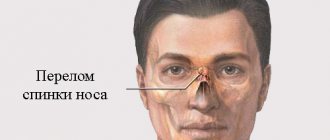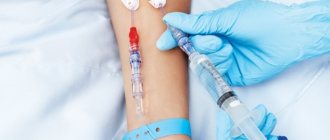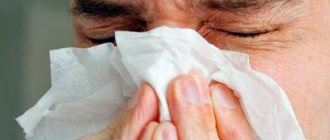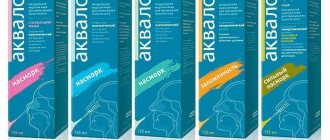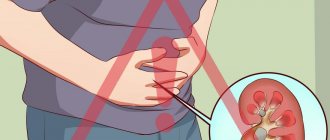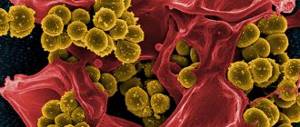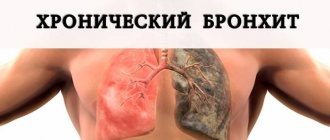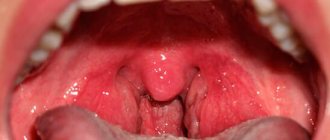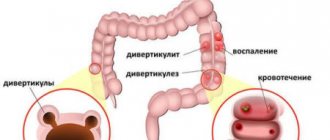General information
Very often, patients turn to otolaryngologists with complaints that they have difficulty breathing through their nose.
As a result, after examination, very often the medical history indicates that this symptom is associated with deformation of the nasal septum. A deviated nasal septum is a condition in which the septum deviates to one or both sides of the midline. With this pathology, a person has difficulty breathing through one or both passages of the nose. Other unpleasant symptoms also occur due to difficulty in the outflow of secretions from the paranasal sinuses.
The main function of the nasal septum is to ensure uniform air flow between both lobes of the nose. If it is bent, then important functions are disrupted - warming, cleansing, moisturizing. This condition (ICD-10 code - J34.2) is one of the most common ailments of the nasal cavity.
Statistics show that a displaced septum is rarely observed in children, but in adults it is very common. About half of all people suffer to some degree from the symptoms caused by this disease. Moreover, it occurs more often in men than in women.
Treatment of deviated nasal septum
This disease is characterized by changes in the osteochondral structures, so elimination of the curvature of the nasal septum is performed surgically. Conservative therapy aimed at alleviating the symptoms of the disease is usually ineffective.
Surgery
An endoscopic operation during which a defect in the nasal septum is corrected is called “septoplasty”. The surgical approach is performed through the nasal cavity; no incisions are made on the face. The duration of the surgical operation, performed under general or local anesthesia, usually does not exceed one hour. At the end of the operation, gauze swabs and special silicone retainers are installed in the nasal cavity, which are removed one day after surgery. Therefore, the patient usually does not need to stay in the hospital for more than a day. 5–7 days after septoplasty, the patient’s nasal breathing is completely restored, and all other signs of the disease disappear.
If a deformity of the nasal septum is detected in childhood, septoplasty is performed after the child reaches the age of 14 years. The exception is when the child has severe symptoms of the disease or often has infectious sinusitis. In such a situation, the operation can be performed under general anesthesia for children over 6 years of age. Surgical treatment of the disease in early childhood should be performed only after a thorough examination of the patient, as a result of which it will be proven that the cause of the symptoms is precisely the curvature of the nasal septum.
Laser treatment
Deviated nasal septum on MRI.
This is a fairly new method of treating deformities of the nasal septum, which has a number of limitations, but is nevertheless successfully used in otorhinolaryngology. This treatment method is based on the effect of a laser beam. Certain areas of the cartilaginous part of the nasal septum are heated to the required temperature and fixed in the correct position using tampons for a day. The duration of the manipulation, performed under local anesthesia, does not exceed 15 minutes. Treatment can be carried out on an outpatient basis and causes virtually no discomfort to the patient. Treatment of deformities of the nasal septum with a laser is possible only in cases where only its cartilaginous part is curved and the cartilage has not been broken.
Many patients diagnosed with this disease refuse treatment because they believe that the symptoms of the disease do not significantly impair their quality of life. Before refusing treatment or deciding whether it is necessary, you should understand the dangers of a deviated nasal septum, since the consequences of the disease can be very diverse. It has been scientifically proven that as a result of impaired nasal breathing, the brain does not receive 10–15% of oxygen, which affects the ability to work in adults and the mental development of children. In addition, changes are observed in the hematopoietic, cardiovascular and reproductive systems of the body. Due to disorders in the immune system, patients are less able to tolerate exposure to adverse environmental factors, especially hypothermia, which significantly increases the risk of infectious diseases of the respiratory system.
Pathogenesis
The nasal cavity is shaped like a prism. A vertical septum runs through the middle of the cavity, dividing the nasal cavity into two halves. It consists of two sections - anterior cartilaginous and posterior bone. The bony section is formed by the perpendicular plate of the ethmoid bone and the vomer, the cartilaginous section is formed by quadrangular cartilage.
In newborn children, the nasal septum is straight and even. It consists of cartilaginous tissue, on which there are areas of ossification. Gradually, the cartilage turns into bones, and the bones grow together. Curvature occurs during human growth due to disruption of certain processes occurring in the body. Curvature may occur due to uneven growth of the cartilage and bone parts, when one of these parts grows faster than the other. Curvatures can also develop as a result of a variety of injuries and damage. Even a minor injury can lead to damage to the growth plates and the gradual development of curvature.
Classification
The following types of this pathology are distinguished:
- crest;
- thorn;
- curvature;
- a combination of different types of pathology.
Depending on the reasons for the development of this manifestation, the following types of curvature are distinguished:
- Physiological - it develops due to the presence of a genetic predisposition to disrupt the development and growth of the bones of the skull.
- Traumatic – becomes a consequence of damage received from a blow, fall or other injuries.
- Compensatory – develops as a consequence of other disorders.
Depending on the severity of the pathology, there are:
- Mild degree - poorly expressed. Does not require treatment.
- Medium degree - the septum occupies half the distance to the lateral surface from the midline. Requires treatment.
- Severe degree - the septum almost touches the side surface of the nose. Requires immediate treatment.
Depending on the location of the curvature:
- In the anterior part - occurs more often.
- In the back - less common.
Causes of a deviated nasal septum
Depending on the type of curvature of the nasal septum, the following causes of this pathology are determined:
- Physiological – uneven growth of the skull, hereditary deformities. Most often, these reasons lead to curvature during adolescence.
- Traumatic – suffered facial injuries, fractures , strong blows leading to displacement. Most often, these reasons are typical for boys and men.
- Compensatory – pathological changes develop as a result of tumors, polyps and other neoplasms in the nasal cavity.
- Viral - changes provoke previous diseases. This may be due to previous influenza , ARVI , otitis media , sinusitis , etc.
Symptoms
Deformations of the nasal septum may not always be noticeable, that is, they may not be reflected in the appearance of the nose. To determine the presence of a deviated nasal septum, an examination by an ENT specialist is necessary. When visiting a doctor, some symptoms from the following list are often revealed:
- difficulty breathing, often one-sided;
- persistent rhinitis and nasal congestion;
- allergic rhinitis, sometimes a consequence of some changes in the septum;
- snoring and apnea;
- dryness of mucous membranes;
- nosebleeds;
- increased incidence of seasonal diseases;
- chronic inflammatory diseases of the middle ear and larynx.
There is no doubt that all the presented signs do not always mean that the septum is deviated.
Each type of pathology must be treated with an individual approach, since complications can be different.
But determining the type of deformities present in a particular person requires a professional approach, including additional research using equipment such as CT and MRI.
It will also be interesting: Characteristics of a fracture of the nasal bones
Symptoms of a deviated nasal septum
If the nasal septum is curved, the patient develops unpleasant symptoms indicating such a pathology.
- Nasal breathing becomes difficult. With a mild degree of pathology, a person may not experience breathing problems. But when hypertrophy of the nasal conchae occurs in the part of the nose opposite to the curvature, the lumen of the healthy part of the nasal passage narrows, and the patient begins to feel a lack of air. He develops heavy nasal breathing and shortness of breath . As a result of such difficulties, a person often gets used to breathing through his mouth.
- Chronic inflammatory processes of the sinuses. With hypertrophy of the intranasal structures, the exit from the sinus narrows, which leads to disruption of the normal outflow of mucus and insufficient oxygen supply inside. When bacterial flora gets inside, purulent inflammatory processes of the paranasal sinuses develop. If acute sinusitis or exacerbations of chronic forms occur more than 4 times a year, you should consider surgical intervention.
- Chronic rhinitis. If one half of the nose is constantly subject to functional overload, then in the wider half, after some time, rhinitis appears in a chronic form. This leads to hypertrophy of the mucosa and increased formation of mucus, which flows into the nasopharynx.
- Inflammatory processes of neighboring organs. People with this pathology often experience inflammation of the middle ear and Eustachian tube. Doctors also note that people with a deviated septum are three times more likely to develop ARVI.
- Dry nose, frequent bleeding. When distorted, excess air pressure is created on the mucous membrane, and this leads to its drying out. Dystrophic changes appear, the mucous membrane becomes thinner. Fragility of blood vessels and frequent nosebleeds are also noted.
- Deterioration of sense of smell. Since with a curved septum there are obstacles to the flow of air and odors to the olfactory epithelium, this leads to a violation of the sense of smell.
- Headache. A headache may occur due to a lack of oxygen in the blood. Hypoxia especially strongly if a person is overloaded mentally or physically.
- Snore. Since with an uneven septum the speed of air flow through the left and right nostril will be different, different pressure is applied to the uvula of the soft palate, which leads to its hypertrophy. As a result, due to the vibration of hypertrophied areas, a person snores in his sleep.
- Changed nose shape. If the septum is bent due to reasons related to injury, then the shape of the nose also changes. It shifts to the left or right, and humps form on its back.
- Fast fatiguability. Due to breathing problems, a person may not feel very well, which is why he gets tired quickly.
The listed symptoms appear depending on the degree of curvature
Signs of a deviated nasal septum
Chronic runny nose. Inflammation of the maxillary sinuses. Due to a certain curvature of the nose, all the contents that are in the sinuses cannot come out and simply stagnate. Pus along with mucus is the best nutritious habitat for various bacteria, which means that the likelihood of a second disease occurring is very high.
It's hard to breathe through your nose. Occurs due to continuous blockage of the nasal passage. The problem can affect either one or both nasal turbinates, the issue is the degree of discomfort, which depends on the level of difficulty of blocking the nasal passages. This symptom appears during fractures when the nasal bone is slightly pushed away or displaced.
Snoring during sleep or loud breathing. This symptom can occur in both children and adults. If a deviated nasal septum occurs in a female, then snoring will not occur much less frequently than in men.- Dry mucous membranes. The mucous membranes are constantly in a dry and irritated state, which is why a person sneezes quite often.
Damage to the hearing organs. Inflammation of the middle ear leads to a deviated nasal septum and the source of infection in the maxillary sinuses. If the inflammation continues to grow and develop, the curvature will be much greater.- Changes in voice tone. A crooked nasal septum in combination with chronic inflammatory diseases leads to the fact that a person talks through his nose, or you can also say “nasally.”
Polyps. Large clusters or single ones of such formations appear on irritated mucous membranes. This happens because a person does not take any measures to improve the blood flow of the nasal septum even in times of poor health.
Obvious curvature of the nasal dorsum. In general, there is not always a connection between a crooked nasal bridge and a deviated septum. With a minor defect, the nasal septum can retain its normal shape, but a straight nasal septum quite often turns out to be crooked.
Treatment and surgery for deviated nasal septum
It is possible to determine what kind of treatment the patient needs only after establishing the diagnosis and the severity of the curvature. Treatment of a deviated nasal septum without surgery is possible only if the pathology is mild, and periodically it is only necessary to relieve unpleasant symptoms. Medicines are used exclusively to eliminate symptoms, since the only way to get rid of the problem is quickly.
The doctors
Medicines
When practicing treatment of a deviated nasal septum without surgery, the following medications can be used to eliminate unpleasant symptoms:
- Washing - for this procedure, saline solution, Furacilin iodine solution , etc. are used.
- Decongestants – they help relieve swelling of the mucous membrane and improve airway patency. The agents used are Xymelin , Nazivin , Naphthyzin , Otrivin , etc.
- Antihistamines - help reduce the severity of allergic manifestations (swelling of the mucous membranes, runny nose). Suprastin , Loratadine , Diazolin , etc. are used
- Antibiotics are used if an infection develops.
But such remedies only help eliminate symptoms. They cannot be used continuously.
Procedures and operations
To alleviate the condition, a light massage of the bone cartilage is performed.
It is also practiced to use a special plastic nose pad, which is worn for several hours a day. It acts on the cartilaginous base and levels it out. This device is used if the curvature occurs due to edema, polyps, or viral diseases. However, it is important to take into account that such methods do not affect the cause of the pathology.
The most effective treatment is nose surgery. Septoplasty is an operation for a deviated nasal septum, which is performed under local or general anesthesia . During the intervention, the cartilage is straightened. To do this, the doctor removes the cartilage and moves its components. Next, a retainer is applied to the back of the nose. Typically, the operation lasts about an hour. The cost of treatment depends on the type of surgery.
As a rule, surgery is performed using low-traumatic methods. During the operation, septoplasty can be combined with rhinoplasty.
The following types of septoplasty are currently used:
- A classic surgical operation - a specialist makes incisions on the inner surface of the nose, after which he gives the correct shape and location to the septum. In this case, the tissues of the septum are preserved. It is carried out under general anesthesia.
- Endoscopic - the surgeon makes small incisions and uses a thin endoscope. The process of surgical intervention is monitored by the image on the monitor. The operation is low-traumatic and is performed under general anesthesia. Reviews indicate that recovery is fast.
- Laser is the most modern and gentle technique. It is performed using local anesthesia and does not cause complications or bleeding. However, the price of laser treatment is higher.
After the operation, special tampons are inserted into the nasal cavity, which are removed after 1-2 days.
Before performing any surgical intervention, the doctor pays attention to concomitant general diseases in order to completely eliminate contraindications.
Numerous reviews of surgery for a deviated nasal septum indicate that to obtain an effective result, it is very important to properly conduct the recovery period. Septoplasty is performed in an inpatient department. During the first time after surgery, slight swelling of the nose will be noted.
There is a possibility of bleeding from the mucous membrane and fever in the first days after surgery. In general, recovery lasts about two weeks. At this time, you should not practice physical activity, visit the bathhouse or sauna. During the recovery period, it is important to protect the body from infection attacks.
Types of deviated nasal septum
There are three degrees of severity of the pathology:
- Light – the partition deviates slightly from the central axis;
- Medium - the septum deviates to the center of the sinus;
- Severe - the septum almost touches the wall of the nose.
There is a list of several types of curvature, according to experts:
Unilateral comb-like curvature that does not interfere with nasal breathing, which affects the front part of the nasal septum;- Unilateral comb-like deformation of the rear part of the nasal septum;
- The comb-like deformity, which impairs respiratory function, is pronounced and is located in the frontal region of the nose;
- Comb-like deformation of the rear part of the nasal septum, which has the appearance of a “Turkish saber”;
- Comb-like curvature in all nasal sinuses, after which the nasal septum takes on the shape of the letter “S”;
- Multiple curvatures or compressed nasal septum;
- Comb-like deformities running horizontally, which are found in both turbinates.
Important! A slight curvature of the nasal septum does not affect the respiratory process in any way and does not appear on a person’s appearance, and therefore does not require any correction.
However, in a number of different cases, even the smallest deformation can create a “swirl” of air masses and cause discomfort, in addition, some unpleasant sensations that you feel during the breathing process, caused by the ridges and spikes that cover the deformed partition. In these cases, such curvature requires treatment.
Treatment with folk remedies
The use of traditional methods for such pathology is often practiced. But it is still important to understand that any traditional methods can only alleviate the condition, but do not help get rid of the pathology.
- Herbal infusions and decoctions. It is recommended to drink herbal decoctions that have anti-inflammatory properties. You can make tea from chamomile, mint, lemon balm, St. John's wort, etc.
- Lotions with essential oils. To carry out such a massage, you need to take essential oil of fir or eucalyptus, drop a few drops of this oil into a small amount of water and moisten a cotton pad in it. Apply the lotion to your nose and hold for 15 minutes.
- Massage with propolis ointment. Propolis ointment should be applied in a circular motion to the cheeks near the nose. It will help relieve congestion. You can also use “Star” balm for this purpose.
- Washing. You can rinse your nose with saline solution, a decoction of string or chamomile. The prepared solution must be inhaled alternately through each nostril and exhaled through the nasopharynx.
- Garlic and onion. If the pathology occurs as a result of a viral process, you can instill a solution of garlic and onion into the nose. You need to take one part of onion and garlic juice, mix it with five parts of water. The product should be instilled into the nose 5-6 times a day. This will help stop viral processes.
- Beet juice. Fresh beet juice should be dripped into each nostril - 3-4 drops three times a day.
- Honey. If allergic to honey, you can drip honey dissolved in water into your nose (one part honey, two parts water). This is done 3 times a day.
- Aloe compress. Wrap a quarter of an aloe leaf in gauze and apply to each nostril in turn.
- Honey and black radish. Grate the radish, mix with an equal part of honey, wrap in gauze. Place in each nostril one at a time and hold for 15 minutes.
Deviated nasal septum in a child
If a child's septum is deviated, his nasal breathing is impaired and a chronic runny nose develops. Sometimes children with this pathology breathe through their mouths and snore during sleep. Frequent cases of nosebleeds may also occur. Their acute respiratory infections are often complicated by sinusitis and sinusitis . Often the curvature leads to the development of diseases of the auditory tubes, vasomotor rhinitis , etc. It is very important to visit a pediatric otolaryngologist in a timely manner and consult with him about treatment.
If a child has severe curvatures and severe nasal breathing impairment, he may be prescribed surgical intervention after reaching 6 years of age. If there are no obvious violations, the operation is performed at 14-16 years of age.
Deviated nasal septum in children
The nasal septum is displaced from the middle in approximately 80% of babies, and in more than half of the situations this defect is congenital, associated with the properties of the formation of the nose in the prenatal period. In addition, the nose is often damaged at the time of childbirth, since the cartilage of the organ and bones are quite soft, even a slight impact is enough to change their appearance, and most often the septum in the nose itself is bent.
And in a future life, a child can damage the cartilage that divides the nose into 2 parts - this usually happens during games and various sports exercises.
A deviated nasal septum is not always obvious in children, but parents should pay attention to discharge from the baby’s nose and breathing problems, for example, the fact that the child breathes through the mouth, as well as frequent attacks of allergies.
Observations indicate that deformation of the nasal septum begins to cause obvious discomfort to the baby during the loss of baby teeth and their replacement with permanent ones, which is associated with increased growth of the jaw bones.
But in children under 3 years of age, it is difficult to detect a deviated septum; With a high degree of probability, it becomes possible to have surgery after the baby turns 3-4 years old.
A deviated nasal septum in children is unsafe because, due to the defect, the tissues of the nose fold unevenly, and one part of the organ becomes larger than the other.
This lack of symmetry not only disrupts the proportions of a child’s face, but also changes the properties of the air flow that follows through the nose into the lungs.
Nature has equipped a person with 2 equivalent nasal passages in order to ensure a uniform arrival of heated, humidified and filtered air, and due to the distortion of the dividing cartilage, the air stops for some time in the nasal cavity and nasopharynx, which leads to drying out of the mucous zones.
Continuous irritation provokes expansion of the mucous membranes, which in turn causes a narrowing of the nasal passages, as well as inflammation of the maxillary sinuses and even the Eustachian tube located in the middle ear.
In babies, the nasal septum can be curved either in one direction or the other in an “S” shape. Pathology sometimes affects bone tissue; cartilage suffers the most. As a result, the sense of smell is impaired, recurrent sinusitis (chronic runny nose) occurs, the child complains of headaches and suffers from frequent nosebleeds.
Distortion of the nasal septum is dangerous because, without proper treatment, it can give rise to the development of a polyp and acquired sinusitis. At the same time, the use of effective surgical treatment before the prescribed age is prohibited and one has to limit oneself to drug treatment, that is, use pharmaceutical compounds whose effects are aimed at eliminating tissue swelling and opening the nasal passages. To achieve these goals, salt rinses, steroids and antihistamines are used.
Consequences and complications
The consequences of a deviated nasal septum in the absence of proper treatment can be quite unpleasant. First of all, the consequences of this pathology are constant nasal congestion and headache. As complications, sinusitis , frontal sinusitis , and ethmoiditis (inflammatory process of the frontal sinus) can develop.
If the curvature is severe, the Eustachian tube, the channel connecting the ear and nose, can become blocked. As a result, the pressure in the ear cavity increases, which leads to swelling and otitis media. Often people who write on this or that thematic forum also complain about hearing impairment due to this pathology.
If the septum is severely deviated, this results in less oxygen entering the body. Oxygen starvation negatively affects all organs, especially the brain. Therefore, people with this pathology often complain of constant fatigue and weakness.
List of sources
- Atlas of operative otorhinolaryngology. Ed. Pogosova V.S. M.: Medicine; 1983:416.
- Bondarenko HA Some functional changes in the body with a deviated nasal septum / HA Bondarenko // Abstract. Diss. Candidate of Medical Sciences Sci. -Kiev, - 1970. P.20.
- Soldatov I.B. Lectures on otorhinolaryngology: Textbook. 2nd ed., revised. and additional M.: Medicine; 1994:288.
- Tsarapkin G.Yu., Kryukov A.I., Tovmasyan A.S., Gorovaya E.V., Usacheva N.V., Panasov S.A. Septoplasty for deviation of the perpendicular plate of the ethmoid bone. Russian rhinology. 2017;25(1):25-30.

